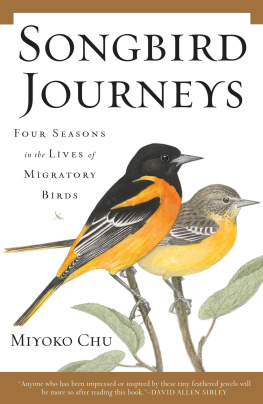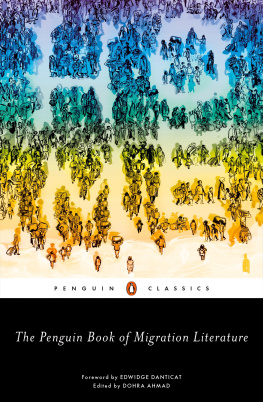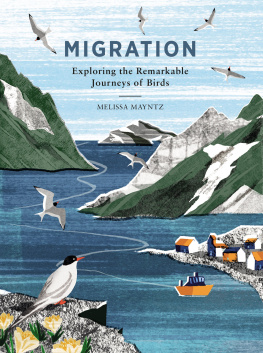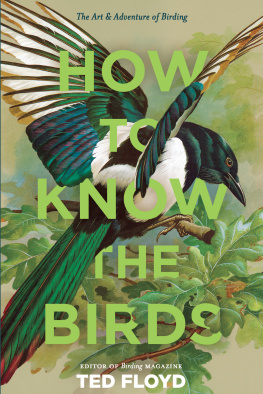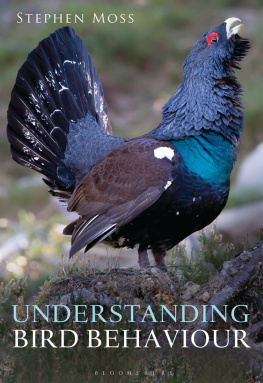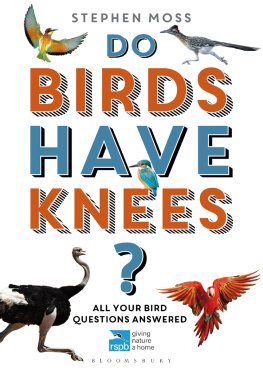THE NEW NATURALIST LIBRARY
BIRD
MIGRATION
IAN NEWTON


Contents
I N THE N EW N ATURALIST S ERIES , volumes dedicated to single components of the biology of a group of species are far from the norm, but interestingly the only other, NN36, by C. B. Williams, published in 1958, also focuses on migration, but in his case of insects. While migration features in all the New Naturalists concerned with groups of birds, even including Grouse (NN107), this volume is a timely analysis of the fascinating phenomenon of migration itself. Dr Ian Newtons account is not only timely, but substantial in both breadth and depth, exploring every facet of bird migration across 25 engrossing chapters.
Look, there is a Swallow and There she goes, spring has come runs the roughly-translated caption round the base of an ancient vase, depicting two youths conversing in a Greek countryside scene. Bird migration must have been a recognisable feature of their environment to even earlier human populations in western Europe: the metronomically obvious calls of the Cuckoo and Chiffchaff announcing oncoming summer warmth, the noisy arrival of the first skeins of geese or swans giving those primitive peoples the first sombre warnings that the hard times of winter were close at hand.
There, for many centuries, interest in the matter rested, with bird migration simply a seasonal fact of life, just as are blossom time or leaf-fall. Not until the advent of the enquiring naturalists of the 18th century did questions begin to be asked about the whereabouts of migrants in their absent season. As recently as 1877, that meticulous and astute observer of the natural world, Gilbert White, in The Natural History and Antiquities of Selborne, pondered at length whether Swallows (Barn Swallows in current terminology) and House Martins flew overseas for the winter, or hibernated in the mud at the bottom of the ponds over which he had his last autumnal sightings of them. He settled finally in favour of the hibernation theory.
The where, when, why, and above all how, of bird migration continued, and still continues to challenge naturalists and ornithological researchers. Not until the early years of the 20th century, with the invention of bird ringing, did the technology begin to become available to help solve some of the problems. Ian Newton describes and assesses the fast-moving development from a wide range of strands of research which have provided the data on which Bird Migration is based, acknowledging the enormous input of amateur naturalists. Appropriately, he is currently Chairman of the British Trust for Ornithology, responsible amongst other things for bird ringing in Britain and Ireland.
He reveals, among other things, that the commonly-held concept of come-in-spring, depart-in-autumn or come-in-autumn, depart-in-spring, covers only part of the migration story, though probably a very substantial part. At any time of year, but particularly in winter, periods of extreme cold weather, either near at hand on the Continent, or far away to the east, can cause mass evacuation of the affected area, usually producing a westward stream of migrants often called a weather movement. Further, studies of radar displays reveal that some birds are migrating in various directions most hours of most days and nights, most of the year.
Dr Newton is a tireless fieldworker himself, and has spent an outstanding research career in ornithological ecology, with over 250 scientific papers and several books to his credit. Most of his career has been with Governmental research bodies from the Nature Conservancy, through several metamorphoses, to the Institute of Terrestrial Ecology at its Monks Wood Research Station, sadly recently closed. His national and international standing in avian ecology has been recognised by his service as President of the British Ecological Society and the British Ornithologists Union, by an Honorary Fellowship of the American Ornithologists Union, and by his election to Fellowship of the Royal Society and appointment as OBE.
Ian Newtons previous contribution to the New Naturalist library was in 1972 with Finches (NN55). On the cover, the (then) Editorial Board commented that his account seems to us a model of scientific writing for the general reader: balanced, lucid and absorbing. Readers of Bird Migration will find that nothing has changed!
CHAPTER 1
Introduction
O RNITHOLOGISTS USE THE TERM migration to signify a regular return movement of birds each year between separate breeding and wintering areas. In the process, birds can cover hundreds or thousands of kilometres, and some can cross inhospitable areas such as seas, deserts or high mountain ranges. In contrast, non-migratory (resident or sedentary) birds tend to remain in the same localities year-round, so that their populations show no obvious large-scale seasonal shifts in distribution. In many regions, including the British Isles, some bird species are migratory, while others are resident, and yet others are classed as partial migrants, because some individuals remain year-round, while others from the same breeding areas leave to winter elsewhere. Migratory birds can in turn be divided into summer visitors such as the Barn Swallow and Cuckoo, winter visitors such as the Fieldfare and Brent Goose, and passage migrants, which appear each autumn and spring as they travel between breeding areas to the north of the British Isles and wintering areas to the south.
Migration is shown by many kinds of animals, including butterflies and other insects, mammals, marine turtles and fish, but in none is it as extensively developed as in birds. The collective travel routes of birds span almost the entire globe, with some extreme return journeys covering more than 30,000 km. As a result of migration, bird distributions are continually changingin regular seasonal patterns, and on local., regional or global scales. Migratory birds can thereby occupy widely separated areas at different seasons, and many individuals return repeatedly to the same breeding places from year to year, and sometimes also to the same wintering places. Outside the tropics, their movements are most marked in spring and autumn, but can occur in every month of the year in one species or another. These facts raise questions about the ecological factors that underlie the movements and distributions of birds that simply do not arise with more sedentary organisms.
Birds are also pre-adapted for long-distance migration in ways that other animals are not. For one thing, most birds can fly. The main advantage of flight is its speed, which is much faster than running or swimming. Flight requires more energy per unit time, but because of the greater distance covered, it is the cheapest mode of travel overall. One type of flight, by still-wing soaring and gliding, is less costly than flapping flight, but is practised mainly by larger species such as albatrosses, which can travel the southern seas at little more energy cost than sitting still. Long-distance flight also allows birds to cross inhospitable areas that would otherwise act as barriers to their movementssuch as seas for land birds or barren deserts for forest birds. Nevertheless, while most birds migrate by flying, penguins and some other seabirds migrate by swimming, and some land birds by walking for part or all of their journeys.
Most birds are of abody mass that enables them to become airborne. All possess feathers, whose most obvious feature is encapsulated in the expression light as a feather. Feathers come in two main types: small flexible ones which form an insulating body covering, and longer, stiffer but still flexible ones that form the major surface area of the wings and tail. In further adaptation, birds have a strong but lightweight skeleton, with hollow bones, and wing shapes that ensure efficient flight. The wings are powered by massive breast muscles, the pectoralis and supracoracoideus, which make the downward and upward strokes, respectively. The two pectoralis muscles, one on each side of the breast, are by far the largest muscles in the body of flying birds, forming more than one-third of the total body mass of some species. These muscles are well supplied with blood vessels, and consist of fast-contracting fibres, which in many species can beat the wings continuously for hours or days on end.
Next page

